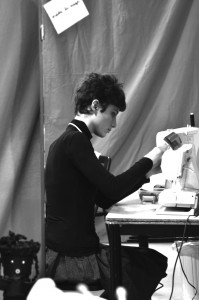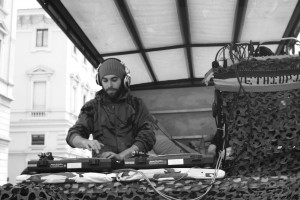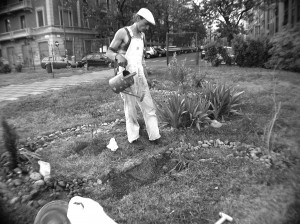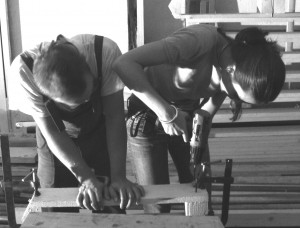 Attori del riuso temporaneo/ Temporary reuse subjects
Attori del riuso temporaneo/ Temporary reuse subjects
Attori del riuso temporaneo
Diverse popolazioni abitano, ri-attivano, lavorano e riprogettano molti degli spazi urbani in abbandono o sottoutilizzati e divengono attori protagonisti e talvolta agenti inconsapevoli di una ben più ampia trasformazione territoriale. Immigrati e homeless italiani, assistenti sociali e medici di strada, organizzazioni, fondazioni, associazioni caritatevoli e di cittadini, comitati locali, associazioni culturali legate alla cura del verde, dell’arte, architetti, artisti, artigiani, amministratori e tecnici comunali, organizzatori di eventi, compagnie di spettacolo musicale, cinema, teatro, circo, ortisti locali, impiegati e operai di ditte e depositi per le infrastrutture, per l’edilizia e cementifici, parcheggiatori, prostitute, spacciatori, venditori ambulanti, sindacati, centri sociali e agenzie di sviluppo locale… tutti sono operatori con logiche di appropriazione territoriale. Quello che cambia sarà il rapporto interno/esterno ad esempio la comunicazione della presenza di un’attività a livello cittadino e la capacità di fare rete con il contesto. Un altro elemento di differenziazione sarà la gestione dello spazio, come la manutenzione e la cura, la risemantizzazione e rinominazione dei luoghi, l’apertura e chiusura al pubblico. Il ruolo autopoietico di un soggetto con lo spazio residuale, sarà la misura per autorappresentare la propria attività (Inti 2005). In rapporto alla relazione o meno con le istituzioni e la proprietà degli immobili, alla capacità di autorappresentazione e comunicazione, alla progettualità e gestione degli spazi, possiamo allora individuare diversi attori della trasformazione di spazi residuali.
Dagli anni ’70 ad oggi gli attori e le pratiche di riuso temporaneo di spazi in abbandono cambiano nomi, istanze, ruoli, presenze, tempi e strategie di riappropriazione. Sono attori che esprimono realtà complesse, talvolta frammentate e difficili da ingabbiare nelle maglie di una descrizione sistematica. Dopo le occupazioni abitative e le rivendicazioni politiche di immobili vuoti degli anni ’70 e ’80, le autogestioni di centri sociali per i giovani e l’autoproduzione musicale degli anni ’90, le situazioni di “conflitto creativo” (Cognetti 2003) nella riprogettazione di spazi in abbandono come centri per la comunità e per l’arte del passato decennio, quali dispositivi abbiamo oggi a disposizione per ripensare quell’enorme patrimonio di edifici vuoti e spazi aperti inutilizzati presente nelle nostre città?
Alla fine degli anni ’90 in molte metropoli europee quando le condizioni sociali, economiche e politiche non hanno reso più possibile un utilizzo informale di spazi ed edifici in abbandono, si sono re-inventate nuove tattiche e procedure per il riuso di molti dei vuoti urbani in attesa di riconversione. Molte di queste pratiche e modalità di progetto sperimentale avviate da associazioni culturali, da artisti, da gruppi di attivisti si sono poi sedimentate. Alcune realtà hanno stilato dei veri e propri manuali d’uso, ad es. il “Precarious Occupancy Manual” del progetto PRECARE dell’ONG Citymine(d) di Bruxelles, con tanto di regole e consigli pratici per avviare progetti di riuso temporaneo di edifici e spazi in abbandono. Dall’analisi di alcuni casi studio ad Amsterdam, Bruxelles, Berlino e Milano, possiamo osservare che i processi di riuso temporaneo hanno in comune alcuni attori e passaggi fiduciari fondamentali (Pagliaro 2010). La figura del proprietario (pubblico o privato) dell’immobile o terreno in abbandono, che per propria spontanea volontà o per richiesta altrui, mette a disposizione lo spazio vuoto, mantenendone la proprietà. Esiste poi l’intermediario (associazione culturale, cooperativa, ONG, ufficio pubblico) che gestisce l’intera organizzazione del processo di riuso temporaneo e facilita il passaggio di informazioni, documenti, permessi amministrativi tra la proprietà e i futuri usufruttuari temporanei. L’intermediario delinea le voci contrattuali secondo le richieste del proprietario e secondo l‘approvazione e controllo della pubblica amministrazione (ad es. quando dev’essere riconsegnato lo spazio e che tipo di interventi sono permessi) ed infine fornisce una garanzia giuridica (spesso una fideiussione) sulla riconsegna dello spazio alla fine del progetto temporaneo.
L’intermediario in possesso di una scheda dettagliata sullo spazio, sui tempi e sui limiti che il progetto di riuso temporaneo deve rispettare, mette a disposizione lo spazio all’usufruttuario che lo prende in consegna firmando un contratto di comodato d’uso temporaneo (diventando così comodatario dello spazio) con il proprietario (comodante). Talvolta avviene un doppio contratto di comodato d’uso tra la proprietà e l’intermediario, che diviene soggetto gestore dello spazio, e tra il soggetto gestore e le realtà usufruttuarie. Gli usufruttuari (spesso giovani professionisti, artisti, studenti, artigiani, associazioni) possono ora godere dello spazio e iniziare le attività progettate e convalidate dall’intermediario, per il periodo temporale stabilito avendo la completa responsabilità dei loro esiti e dei possibili problemi. Alla fine del periodo concesso per il riuso temporaneo dello spazio (scadenza del contratto di comodato d‘uso), l’usufruttuario riconsegna lo spazio all’intermediario, provvedendo a ripristinarlo secondo le condizioni contrattuali stabilite.
Temporary reuse subjects
Several people live, re-activate, work and redesign many of the urban spaces abandoned or underused, and become key players and sometimes unwitting agents of a much wider territorial transformation. Immigrants and Italian homeless, social workers and street doctors, organizations, foundations, charities and citizens associations, local committees, cultural associations linked to the care of the green, art, architects, artists, artisans, administrators and municipal technicians, event planners, music companies, entertainment, cinema, theater, circus, green guerrillas, employees and workers of companies and warehouses for infrastructure, construction and cement workers, parking attendants, prostitutes, drug dealers, street vendors, trade unions, community centers and local development agencies… All people are operators with logic of territorial ownership. What changes will be the internal / external relationship, for example the communication of the presence of activity at city level and the ability to network with the context. Another distinguishing feature is the management of the space, such as maintenance and care, and the re-semantic and renaming of places, the opening and closing to the public. The autopoietic role of a subject with the residual space, will be the measure to represent himself and his activity (Inti, 2005).
Considering or not the relationship with the institutions and the ownership of property, the ability to self-representation and communication, planning and space management, we can then identify the different actors of the transformation of residual spaces. From the ’70s to today’s the actors and the practices of temporary reuse of abandoned spaces are changing names, instances, roles, attendance, time and strategies of reappropriation. They are actors who express complex situations, sometimes fragmented and difficult to mesh cage in a systematic description. After the housing occupations and political demands of empty buildings of the ’70s and ’80s, the self-management of the social centers for youth and the music self-production of the ‘90s, the situations of “creative conflict” (Cognetti 2003) in the redesign of space in neglected areas as art and community centers of the past decade, which devices are available today to rethink of the great wealth of empty buildings and unused open spaces of our cities ? At the end of the ‘90s in many European cities when the social, economic and political conditions made possible no more an informal use of spaces and buildings, new tactics and procedures for the reuse of many of the urban voids awaiting conversion were re-invented. Many of these practices and experimental projects initiated by cultural organizations, artists, groups of activists sedimented later. Some realities drew up some real user manuals, for example the “Precarious Occupancy Manual” of PRECARE project of the Citymine(d) NGO in Brussels, with lots of rules and practical tips for organizing projects for temporary reuse of buildings and spaces in abandonment.
From the analysis of some case studies in Amsterdam, Brussels, Berlin and Milan, we can see that the processes of temporary reuse have in common some actors and fundamental trustee steps (Pagliaro, 2010). The type of the owner (public or private) of the abandoned building or land, who for his own will or for request of others, provides the empty space, maintaining the property. Then there is the intermediary (cultural association, cooperative, NGO, government) that manages the entire organization of the process of the temporary re-use, and facilitates the passage of information, documents, administrative permits between the property and the future temporary usufructuaries. The intermediary outlines the contract guide lines as requested by the owner, and in accordance with the approval and control of the public administration (for example when the space must be returned and what kind of actions are allowed), and finally provides a legal guarantee (often a bank guarantee) on the return of the space at the end of the temporary project. The intermediary in possession of a detailed form on space and time limits that the project of temporary reuse must comply, provides the space to the usufructuary who takes it in charge, by signing a contract of loan for temporary use ( becoming the baileeof the space) with the owner (Bailor). Sometimes it is a double-free loan agreement between the property and the intermediary, who becomes manager of the space, and between the manager and the temporary tenants. The temporary usufructuaries (often young professionals, artists, students, artisans, associations) can now enjoy the space and begin the planned activities and validated by the intermediary, for the time period set out having full responsibility for their outcomes and possible problems. At the end of the period granted for the temporary reuse of the space (end of the contract of loan for use), the temporary usufructuary has to return the space to the intermediary, providing to restore it following the contract conditions.




